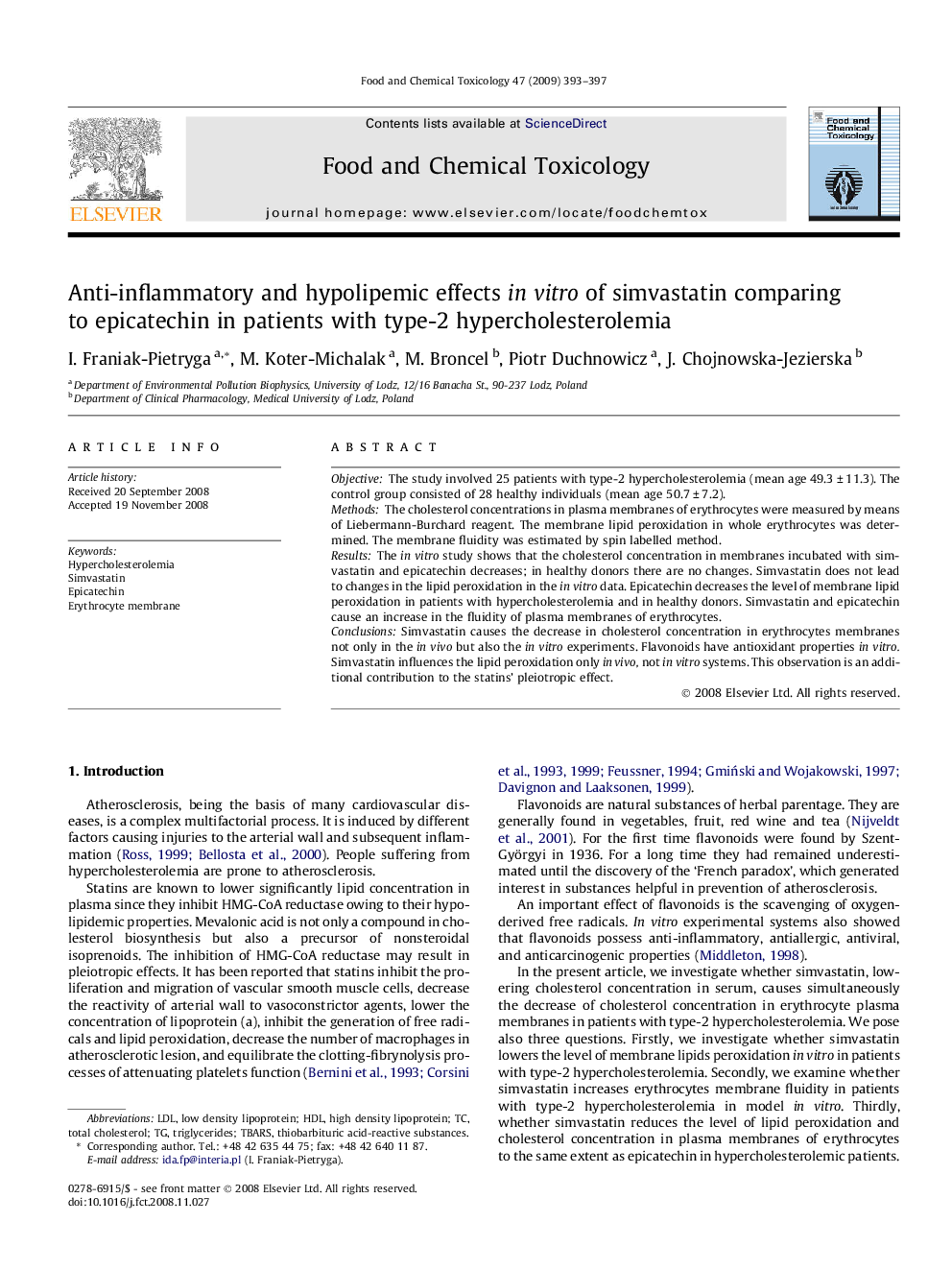| Article ID | Journal | Published Year | Pages | File Type |
|---|---|---|---|---|
| 2586632 | Food and Chemical Toxicology | 2009 | 5 Pages |
ObjectiveThe study involved 25 patients with type-2 hypercholesterolemia (mean age 49.3 ± 11.3). The control group consisted of 28 healthy individuals (mean age 50.7 ± 7.2).MethodsThe cholesterol concentrations in plasma membranes of erythrocytes were measured by means of Liebermann-Burchard reagent. The membrane lipid peroxidation in whole erythrocytes was determined. The membrane fluidity was estimated by spin labelled method.ResultsThe in vitro study shows that the cholesterol concentration in membranes incubated with simvastatin and epicatechin decreases; in healthy donors there are no changes. Simvastatin does not lead to changes in the lipid peroxidation in the in vitro data. Epicatechin decreases the level of membrane lipid peroxidation in patients with hypercholesterolemia and in healthy donors. Simvastatin and epicatechin cause an increase in the fluidity of plasma membranes of erythrocytes.ConclusionsSimvastatin causes the decrease in cholesterol concentration in erythrocytes membranes not only in the in vivo but also the in vitro experiments. Flavonoids have antioxidant properties in vitro. Simvastatin influences the lipid peroxidation only in vivo, not in vitro systems. This observation is an additional contribution to the statins’ pleiotropic effect.
